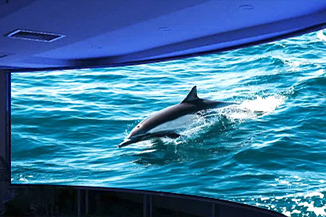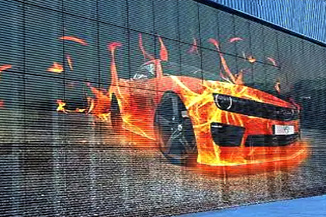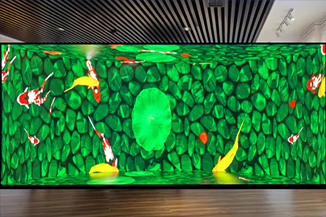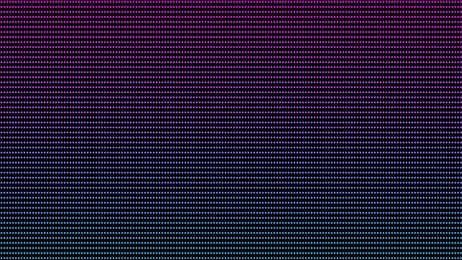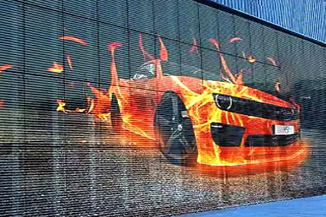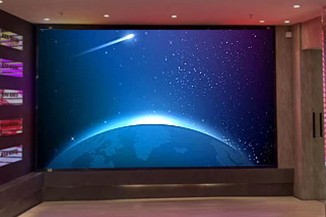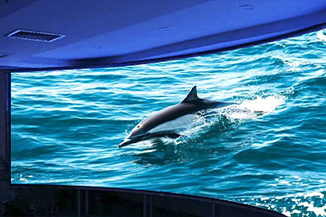Publisher: Supplier of LED Display Time: 2021-12-02 17:45 Views: 1817
Small-pitch LED display refers to indoor LED display with LED dot pitch of P2.5 and below, mainly including P2.5, P2.083, P1.923, P1.8, P1.667, P1.5 and other LED displays Screen products. With the improvement of LED display manufacturing technology, the resolution of traditional LED display has been greatly improved.
We tend to take LED video display for granted. So do we know how the LED screen works? What is the principle of high-definition small-pitch LED screen display? In fact, they have become common features of our town and our main concern is their external quality parameters.
Five core technologies of small-pitch LED display
1. Reduce the dead light rate of the display lamp to ensure the stability of the screen
The dead light rate of traditional LED displays is one in tens of thousands in the industry standard, but small-pitch LED small displays are temporarily unable to do so. According to previous standards, there will be 1 dead light in 10,000 square meters. The display is almost unreadable. Therefore, the dead light rate of the small-pitch LED display must be controlled at one hundred thousandth or even one millionth in order to meet the needs of long-term use. Otherwise, if a large number of dead lights appear over a period of time, the user will never Acceptable.
2. Realize low brightness and high gray
Many people know that human body induction lamps are different from outdoor displays that require high brightness, refresh rate and energy saving requirements. Indoor displays need to lower the brightness. Experiments show that from the perspective of human eye sensitivity, LED (active light source) The brightness is twice that of a passive light source. In terms of specific data, the best brightness for small-pitch LEDs entering the room is 200-400cd/m2. However, the gray-scale loss caused by reducing the brightness needs to be completed by technical supplements. At an exhibition held by Liancheng in 2016, the large-screen display performance network released test samples of small-pitch LEDs, and gave test methods and standards. Tests show that only a few LED display manufacturers can do it at the same time. Low brightness and high gray, most manufacturers need to achieve a certain improvement.
3, standard resolution with signal source
Unlike outdoor displays, outdoor advertisers will choose suitable content and display according to the resolution of the display. Indoor display signal sources have certain standards. As LED display manufacturers, they cannot require access to indoor signal sources. Must adapt to the display screen resolution, but to adapt to the needs of indoor signal sources, design and guarantee the corresponding resolution, so as to meet user needs as much as possible. Fortunately, after more than a year of understanding of indoor LED display products and understanding of customer needs, Lianchengfa has completed this transformation and greatly met the needs of users.
4. Support multi-signal and complex signal system access and display control
Compared with the outdoor display signal, the small-pitch LEDE display signal display is characterized by multi-signal access and complex signal access. For example, video conferences in multiple locations require remote access signals, local access signals, and multi-person use. Access, experiments have shown that simply implementing multi-signal access through the split-screen solution will reduce signal standards. Therefore, how to solve the problem of multi-signal and complex signal access requires technical support from small-pitch LEDs.
5. Realize seamless stitching and high-speed correction
The biggest advantage of small-pitch LED display is seamless, but it has higher requirements when splicing. For liquid crystals, as long as the seams are uniform, there is no problem, and the seams are not obvious. However, the small spacing of LEDs cannot be so. If the modules are squeezed too tightly, bright lines will appear, and dark lines will appear when the modules leave. So it is not easy to splice well. Therefore, the process and calibration technology of the cabinet, as well as the guarantee and good combination of efficiency, need to be given a certain guarantee.
Small-pitch LED display scanning method
Dynamic scanning: Dynamic scanning implements "point-to-column" control from the output of the driver IC to the pixel points. Dynamic scanning requires a control circuit, and the cost is lower than static scanning, but the display effect is poor and the brightness loss is greater.
Static scanning: Static scanning implements "point-to-point" control from the output of the driver IC to the pixels. Static scanning does not require a control circuit, and the cost is higher than dynamic scanning, but the display effect is good, the stability is good, and the brightness loss is small And so on.
With the development of LED technology, the brightness of LED electronic display screens has also been continuously improved, and the size has become smaller and smaller, which indicates that more LED small-pitch electronic display screens will become a general trend in the room.
However, due to the improvement of the brightness and pixel density of the small-pitch LED display, the control and driving of the small-pitch LED display also bring new and higher requirements. As far as general indoor screens are concerned, the current general control methods all use the row and column sub-control mode, which is commonly referred to as the scanning mode. At present, the driving modes of the LED small-pitch display screen are static scanning and dynamic scanning. Divided into static real pixels and static virtual, dynamic scanning is also divided into dynamic real image and dynamic virtual;
In the LED small-pitch display screen, the ratio of the number of lines lit at the same time to the number of lines in the entire area is called the scanning mode. The scanning is divided into 1/2 scan, 1/4 scan, 1/8 scan, 1/16 scan and other driving modes. That is to say, the driving mode of the display screen is different, so the setting of the receiving card is also different. If the receiving card was originally used on a 1/4 scan screen, but now it is used on a static screen, the display on the screen will be lit up every 4 lines. Generally, the receiving card can be set up. After connecting the sending card, display screen, computer and other major devices, you can enter the relevant software on the computer to set it up. So here is the first to introduce the scanning mode and principle of the LED small-pitch display.
HD small-pitch led screen display principle
LED screen display resolution (so-called spatial resolution), in the LED video display, it is closely related to the distance or pitch between pixels;
LED screen maximum brightness: dynamic brightness range is understood as the number of screen brightness levels that can be supported (sometimes called radiation or energy resolution);
LED screen frame rate is usually a measure of the new data display that a video source can feed the entire frame, and the frequency of frame changes per second (fps) (sometimes called time resolution);
The number of LED screen refresh rates (in Hertz) is to draw data on the second display hardware, or refresh the frame (also called time resolution);
LED screen spectral resolution: color image distinguishes light of different spectra. Multispectral image resolution requires even better wavelengths than different spectrums or duplicate colors. This term determines how many spectral components create an image; color uniformity across the entire screen; white balance and the possibility of fine-tuning;
LED screen linear brightness perception-subjective image quality, quality determines the human eye to distinguish between the dark and light parts of the adjacent brightness level on the screen;
LED screen image contrast; image quality depends on the viewing angle. In addition to image quality, it is important to consider some key operating parameters for LED video display.
